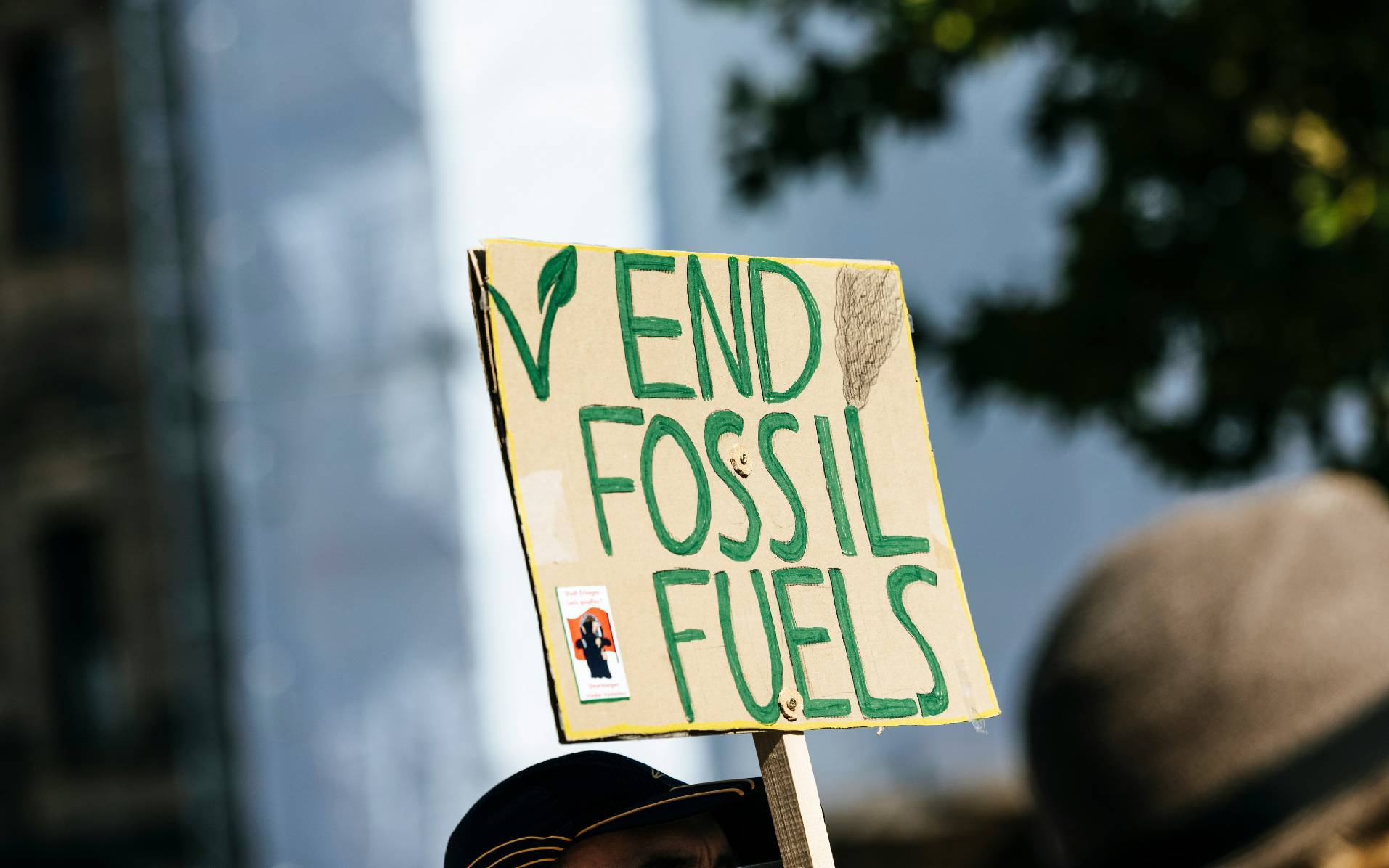
Introduction
The significance of the 28th United Nations Climate Change Conference of the Parties (COP28) in the global dialogue on climate action cannot be overstated. Set in Dubai, this gathering of climate leaders, advocates, and civil society representatives marks a pivotal moment in our journey towards a more sustainable future, with Climate Finance topics central to the discussions.
Climate finance, in its essence, embodies the financial streams and investments aimed at supporting mitigation and adaptation activities to counter climate change.
This year, COP28 unfolds against a backdrop of efforts aimed at transforming financial institutions and mobilizing new funds. Significant steps have been made towards this end, including:
- Updates to multilateral development banks.
- Discussions of debt restructuring held at the Paris Summit for a New Global Financing Pact.
- The United Arab Emirates’ announcement of a $4.5 billion fund for clean energy in Africa.
But, despite these efforts, the stark reality remains that global climate finance remains alarmingly inadequate to keep the global temperature rise within the crucial limit of 1.5 degrees Celsius above pre-industrial levels.
The discrepancy highlights an urgent need for increased private sector investment, particularly in the Global South and for adaptation projects. A need that becomes even more evident given the past and current state of climate finance.
The Current State of Climate Finance
As we approach COP28, the state of climate finance reveals a rapidly evolving landscape. In 2021/2022, average annual climate finance flows nearly doubled from 2019/2020 levels, and reached nearly USD 1.3 trillion. This significant increase was mainly due to a surge in mitigation finance, particularly in the renewable energy and transport sectors, accounting for USD 439 billion of the growth. Notably, methodological improvements and new data sources have also contributed substantially, enhancing the tracking and understanding of climate finance flows.
Global trends in climate finance
The distribution of climate finance remains uneven, both geographically and sector-wise. Developed economies continue to mobilize the majority of climate finance, with China, the US, Europe, Brazil, Japan, and India receiving 90% of the increased funds. This concentration highlights significant gaps in climate finance in other high-emissions and climate-vulnerable countries. Additionally, while energy and transport sectors attract the bulk of mitigation finance, industries like agriculture and emerging technologies like battery storage and hydrogen still receive disproportionately less funding.
The adaptation finance, although reaching an all-time high, falls far short of the estimated needs, particularly for developing countries. Moreover, this finance is predominantly driven by public actors, with private sector contributions remaining fragmented.
In summary, while climate finance has grown significantly, challenges in equitable distribution, sector coverage, and the scale of investment remain. These issues underscore the need for a more coordinated and strategic approach to climate finance, a critical topic for discussion and action at COP28.
Climate Finance Challenges
Despite notable progress in climate finance, challenges persist, particularly in equitable distribution and meeting escalating needs. It’s a simple truth that the current investment of 1% of the global GDP, is simply nowhere near enough to support the vast scale of initiatives needed to support those climate initiatives that are required to keep us within tolerable benchmarks. Looking forward, the need for climate finance is projected to increase dramatically – By 2030, annual requirements are expected to rise steadily, reaching over $10 trillion each year from 2031 to 2050. This indicates that climate finance must increase at least five-fold annually to mitigate the worst impacts of climate change effectively.
Delay in meeting these investment needs not only escalates the costs associated with mitigating global temperature rise but also with managing its impacts. The economic burden of continued business-as-usual investments includes:
- Heightened weather-related damages
- Increased production costs
- Substantial health expenses.
The geographical concentration of climate finance adds to the challenge, with developed economies, notably East Asia, the Pacific, the US, Canada, and Western Europe, mobilizing the majority of these funds. In contrast, less developed countries, particularly vulnerable to climate change, receive a significantly smaller share of global climate finance, exacerbating existing disparities. The private sector’s contribution, though growing, remains insufficient in scale and pace, particularly in emerging markets and developing economies.
These investments are vital to ensure that those most vulnerable to the impacts of climate change, yet least responsible for its causes, have the resources necessary to mitigate, adapt to, and ultimately overcome the challenges posed by this crisis.
Addressing these challenges necessitates a concerted effort to increase funding, enhance equitable distribution, and foster global collaboration, ensuring that all regions can effectively combat and adapt to climate change.
Opportunities and Innovations
Climate finance at COP28 is a dynamic arena, marked by both challenges and breakthroughs. Innovative market-driven solutions like tradable carbon credits* and debt-for-nature swaps are gaining traction. However, the absence of universally recognized climate finance parameters leads to discrepancies in reported investments. Experts advocate for more equity financing from commercial investors and stress the need for institutional capacity in poor countries to manage these investments.
Accountability in meeting financing promises remains a critical challenge, with wealthier nations often falling short of their responsibilities. COP28 discussions will likely focus on risk-sharing strategies, blending public and private money, and increasing grants to developing countries for local project ownership. Multilateral bank reforms are also on the agenda to attract more private finance for vulnerable communities. The European Union’s Sustainable Finance Disclosure Regulation, implemented in 2023, is a step towards addressing greenwashing in investor markets.
Overall, COP28 presents an opportunity to reshape climate finance, emphasizing transparency, equity, and innovation to meet the urgent needs of a warming world.
The Role of Governments and Private Sector
At COP28, the evolving roles of governments and private sectors in climate finance will take center stage, and reflect a shift from traditional paradigms that highlights the increasing emphasis on voluntary contributions, while moving away from the erstwhile model of historical financial responsibilities of developed nations towards developing ones. This redefinition marks a notable departure from longstanding multilateral frameworks, spotlighting equity concerns in global climate finance.
Discussions at COP28 will focus on the need for reinvigorating trust and momentum in international climate processes. The Global Stocktake (GST) at COP28 underscores this, revealing a significant shortfall in current efforts to limit global warming. The summit must serve as a focal point for negotiating new financing arrangements, particularly the establishment and operationalization of the new Loss & Damage Fund. This fund represents a critical juncture in climate finance, with developed countries advocating for voluntary contributions despite pressures from developing nations for acknowledgment of historical financial responsibilities.
The contentious nature of funding sources for the Loss & Damage Fund underscores broader debates about the future financial obligations under climate agreements. Despite the insistence of developing countries on acknowledging historical responsibility, the final agreements lean towards voluntary support, indicating a potential weakening in the differentiation between the contributions of developed and developing countries. This outcome raises concerns about the adequacy and operationalization of the Fund.
These negotiations and the decisions made at COP28 will have profound implications on the future trajectory of international climate finance, setting the tone for how both government policies and private sector investments will shape our collective response to the climate crisis.
Conclusion
In conclusion, COP28 represents a watershed moment in the evolution of climate finance. The conference is not just a forum for discussion, but a crucible for action, where the urgency of climate change meets the complexities of global finance.
As the world grapples with the challenges of equitable distribution, scaling of investments, and fostering collaboration, the roles of governments and private sectors are undergoing a transformative shift. Embracing this change requires a commitment to innovation, transparency, and equity. The decisions and strategies forged at COP28 will be critical in shaping a sustainable, resilient world, where finance is not just a tool for growth, but a beacon of hope for a planet facing an existential threat. As we look ahead, the spirit of COP28 must galvanize us to create a financial framework that is not only robust and dynamic, but also inclusive and responsive to the needs of those most vulnerable to climate change.
(*) – For an in depth review on the evolution of emissions, climate impacts, and human activities exacerbating the problem, as well as how Carbon Credits can be part of the solution, check out our latest report here.
Image credit
Photo by Markus Spiske on Unsplash
- SEO Powered Content & PR Distribution. Get Amplified Today.
- PlatoData.Network Vertical Generative Ai. Empower Yourself. Access Here.
- PlatoAiStream. Web3 Intelligence. Knowledge Amplified. Access Here.
- PlatoESG. Carbon, CleanTech, Energy, Environment, Solar, Waste Management. Access Here.
- PlatoHealth. Biotech and Clinical Trials Intelligence. Access Here.
- Source: https://carboncreditcapital.com/climate-finance-cop28-trends-challenges-opportunities/
- :has
- :is
- :not
- :where
- 1
- 1.3
- 2023
- 2030
- 2031
- 2050
- 28th
- 49
- 50
- 51
- 52
- 53
- a
- About
- above
- Accounting
- Action
- activities
- actors
- adapt
- adaptation
- Additionally
- addressing
- Adds
- adequacy
- advocate
- advocates
- advocating
- africa
- against
- agenda
- agreements
- agriculture
- ahead
- aimed
- All
- also
- Although
- an
- and
- Announcement
- annual
- Annually
- approach
- Arab
- ARE
- Arena
- arrangements
- AS
- asia
- associated
- At
- attract
- average
- away
- backdrop
- Bank
- Banks
- battery
- battery storage
- BE
- beacon
- becomes
- been
- benchmarks
- between
- Billion
- blending
- both
- Brazil
- breakthroughs
- broader
- burden
- but
- by
- CAN
- Canada
- cannot
- Capacity
- capital
- carbon
- carbon credits
- causes
- Celsius
- Center
- center stage
- central
- challenge
- challenges
- change
- check
- China
- civil
- clean
- clean energy
- Climate
- climate action
- Climate change
- climate crisis
- collaboration
- Collective
- combat
- commercial
- commitment
- Communities
- complexities
- concentration
- Concerns
- concerted
- conclusion
- Conference
- continue
- continued
- contrast
- contributed
- contribution
- contributions
- coordinated
- cop28
- Costs
- Counter
- countries
- coverage
- create
- credit
- Credits
- crisis
- critical
- crucial
- Current
- Current state
- damage
- data
- debates
- Debt
- decisions
- depth
- Despite
- developed
- developing
- Developing Countries
- Development
- dialogue
- disclosure
- discrepancy
- discussion
- discussions
- distribution
- doubled
- dramatically
- driven
- Dubai
- due
- dynamic
- each
- East
- Economic
- economies
- effectively
- effort
- efforts
- embodies
- embracing
- emerging
- emerging markets
- emerging technologies
- Emissions
- emphasis
- emphasizing
- end
- energy
- enhance
- enhancing
- enough
- ensure
- ensuring
- equitable
- equity
- equity financing
- essence
- establishment
- estimated
- Ether (ETH)
- Europe
- European
- Even
- evident
- evolution
- evolving
- existential
- existing
- expected
- expenses
- experts
- facing
- Falling
- falling short
- Falls
- far
- final
- finance
- financial
- Financial institutions
- financing
- Flows
- focal
- Focus
- For
- forged
- Forum
- Forward
- Foster
- fostering
- fragmented
- Framework
- frameworks
- from
- fund
- funding
- funds
- future
- gaining
- galvanize
- gaps
- gathering
- GDP
- geographical
- geographically
- given
- Global
- global warming
- Government
- Governments
- grants
- Growing
- grown
- Growth
- Have
- Health
- Held
- High
- highlights
- historical
- hope
- How
- However
- HTTPS
- human
- hydrogen
- Impacts
- implemented
- implications
- improvements
- in
- In other
- includes
- Including
- Inclusive
- Increase
- increased
- increasing
- india
- indicates
- indicating
- industries
- initiatives
- Innovation
- innovative
- Institutional
- institutions
- International
- investment
- Investments
- investor
- Investors
- issues
- ITS
- Japan
- journey
- jpg
- just
- Keep
- landscape
- latest
- leaders
- Leads
- least
- less
- levels
- like
- likely
- LIMIT
- LINK
- local
- longstanding
- Look
- looking
- loss
- made
- mainly
- Majority
- manage
- managing
- marked
- Markets
- Meet
- meeting
- Meets
- Mitigate
- mitigating
- mitigation
- mobilize
- model
- moment
- Momentum
- money
- more
- Moreover
- most
- moving
- multilateral
- must
- Nations
- Nature
- Near
- nearly
- necessary
- Need
- needed
- needs
- negotiations
- New
- New Funds
- notable
- notably
- obligations
- of
- often
- on
- ones
- only
- opportunities
- Opportunity
- Other
- our
- out
- Outcome
- over
- Overcome
- overstated
- ownership
- Pace
- Pacific
- paradigms
- parameters
- paris
- part
- particularly
- parties
- past
- pivotal
- planet
- plato
- Plato Data Intelligence
- PlatoData
- Point
- policies
- poor
- posed
- potential
- predominantly
- presents
- private
- private sector
- Problem
- processes
- Production
- profound
- Progress
- project
- projected
- projects
- promises
- public
- raises
- rapidly
- reached
- reaching
- Reality
- receive
- receiving
- recognized
- reflect
- regions
- Regulation
- remain
- remaining
- remains
- Renewable
- renewable energy
- report
- Reported
- Representatives
- represents
- required
- Requirements
- requires
- reshape
- resilient
- Resources
- response
- responsibilities
- responsibility
- responsible
- responsive
- restructuring
- revealing
- Reveals
- review
- Rise
- robust
- Role
- roles
- Scale
- scaling
- sector
- Sectors
- serve
- set
- setting
- Shape
- shaping
- Share
- shift
- Short
- shortfall
- significance
- significant
- significantly
- Simple
- simply
- smaller
- Society
- solution
- Solutions
- Sources
- South
- spirit
- Stage
- stark
- State
- steadily
- Step
- Steps
- Still
- stocktake
- storage
- Strategic
- strategic approach
- strategies
- streams
- stress
- substantially
- SUMMARY
- Summit
- support
- Supporting
- surge
- sustainable
- sustainable future
- Swaps
- Take
- Technologies
- that
- The
- The Future
- the world
- their
- These
- this
- those
- though?
- threat
- to
- TONE
- tool
- topic
- Topics
- towards
- Tracking
- traction
- traditional
- trajectory
- transformative
- transforming
- Transparency
- transport
- Trends
- Trillion
- Trust
- truth
- Ultimately
- under
- undergoing
- underscore
- underscores
- understanding
- United
- united nations
- universally
- urgency
- urgent
- us
- USD
- Vast
- vital
- voluntary
- Vulnerable
- was
- we
- WELL
- Western
- Western Europe
- while
- will
- with
- within
- world
- Worst
- year
- yet
- zephyrnet












